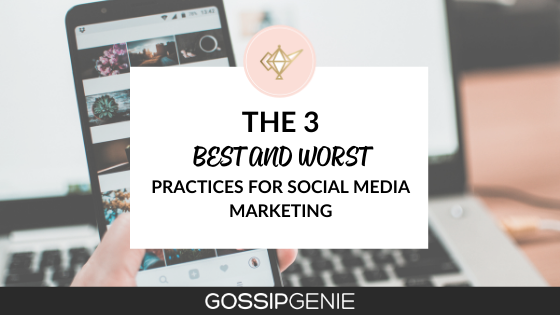We’ve all seen it – that dreaded social media post from a brand that makes you cringe or a brand handling a crisis with near perfection. It’s no secret that social media is constantly evolving, so it’s hard to stay on top of the latest trends and tricks. That’s why we compiled a few best – and worst – practices to help your brand soar on social.
BEST PRACTICES
1. Know Your Audience
One of the most important practices of social media marketing is knowing your audience. As a marketer, you need to be able to identify your niche so that you can truly hone in on it. Getting specific about your target audience helps you to post and share content that directly applies and relates to their everyday lives. Understanding who you are trying to connect with and what channels are best to reach them at is vital. A great place to start would be identifying your ideal demographic and then researching that audience.
Pro tip: It is okay to look at your competition, what platforms they are using, and the techniques that they use to capture the attention of a similar target audience.
2. Hiring the Right Team Members
An important practice of social media marketing that may not initially come to mind is hiring the right people. You need team members that know how to use the tools correctly and have the right skill sets to achieve success for your brand.
Conversational skills and the ability to solve problems are two key skills. Conversational skills are necessary when communicating with consumers, such as responding to both positive and negative comments, direct messages, and shares. Marketers need to notice opportunities for when and how to bring a customer closer, and the best ways to respond to their questions and feedback. The ability to solve issues pairs with this because there is an appropriate way to communicate with unhappy customers and de-escalate crisis situations.
Pro tip: Team members who are empathetic can be great at connecting with consumers and helping them feel as if the content was created just for them.
3. Respond to Consumers in a Timely Manner
Receiving a large amount of engagement is great for brands and shows that the content you are creating is worth talking about. However, it is very important to engage with your community.
Responding to all comments, messages, and mentions in a timely manner is important to keep consumers coming back. The goal is to keep the conversation flowing and get consumers excited about your responses.
Pro tip: It is important to respond to both the good and the bad. When working with the bad, the goal is always to solve the issue and appease the consumer.
WORST PRACTICES
1. Ignoring Negative Feedback
As mentioned above, one of the worst practices for social media marketing is ignoring negative posts, comments, and messages. There are many different ways to go about handling these situations. The goal is to always try to turn a negative experience into a positive one for the consumer. Try to connect and sympathize with the consumer and help solve their problem. The best way to do this is to take the situation offline, if possible. You can always ask them to send you a private message with more information so you can better resolve the issue outside of the public eye. On some platforms, such as Facebook, it is possible to hide a comment so that only the person who posted it and their friends can view it (see below). This helps eliminate some sharing of the comment with the general public while you are working on solving the conflict.
![]()
2. Automatic Posting Too Far in Advance
Platforms such as Sprout Social and Hootsuite have given social media marketers the ability to schedule posts in advance. This has been a helpful time-saving tool, however, scheduling too far in advance can affect the quality of the content. Information and news are constantly changing and keeping your content fresh and up to date is not always possible when your posts are scheduled even a few weeks in advance.
Pro tip: Scheduling posts one to two weeks in advance is a good rule of thumb. Make sure to keep an eye on followers and engagement to see how it changes.
3. Overposting
Overposting on your social media platforms can have a negative impact on your overall social media goals. If your content starts to flood consumers’ feeds, users will start to either tune out the content or unfollow the account. Consumers are looking for information that they can engage with, not be overwhelmed with. It is always quality over quantity when it comes to social media posts.
Need additional help on your social media? Contact the genies today!


